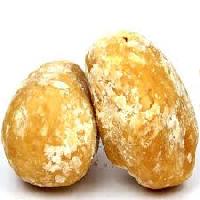From Sugarcane Product to Energy: The Multiple Uses of Sugarcane
From Sugarcane Product to Energy: The Multiple Uses of Sugarcane
Blog Article
The Trip of Sugarcane: From Harvest to Everyday Products
The trip of sugarcane is a complex procedure that starts with precise cultivation and finishes in a range of products that penetrate our day-to-day lives. As we check out the various aspects of sugarcane's trip, its role in sustainability and the wider implications for our atmosphere come into sharper focus.
Farming of Sugarcane
The cultivation of sugarcane is a vital farming procedure that requires certain ecological conditions and management practices. Optimal growth takes place in exotic and subtropical regions where temperatures range in between 20 ° C and 32 ° C. Adequate rains or irrigation is crucial, as sugarcane flourishes in wet soil with well-drained problems (sugarcane product). Dirt high quality substantially influences return; hence, farmers typically conduct soil examinations to identify nutrient needs
This approach promotes reliable collecting and makes the most of sunshine exposure. Crop rotation and intercropping are recommended practices to enhance soil fertility and reduce pest infestations.
Prompt application of these fertilizers can significantly boost sugar yields. On the whole, successful sugarcane farming pivots on a combination of ecological stewardship, tactical preparation, and continuous management methods.
Collecting Methods
Successful sugarcane growing culminates in the collecting stage, which is pivotal for optimizing return and ensuring quality. The timing of the harvest is important; sugarcane is generally harvested when sucrose levels peak, usually in between 10 to 18 months after planting. This period differs based on climate, soil kind, and sugarcane variety.
Gathering techniques can be extensively classified right into handbook and mechanical approaches. Hand-operated harvesting is labor-intensive, counting on skilled workers that make use of machetes to cut the stalks close to the ground. This approach enables discerning harvesting, where only the ripest walking sticks are picked, thereby improving general sugar web content.
Conversely, mechanical harvesting has gotten popularity due to its effectiveness and cost-effectiveness. Specialized farmers outfitted with cutting knives and conveyor systems can process big locations promptly, substantially lowering labor costs. This approach may lead to the addition of premature walking canes and a possible decline in sugar top quality.

Despite the technique employed, guaranteeing that gathered walking sticks are carried quickly to processing facilities is essential. Motivate taking care of minimizes putridity and preserves the integrity of the sugarcane, establishing the phase for ideal processing.
Handling Techniques
Handling sugarcane involves numerous essential actions that transform the harvested stalks right into functional products, mostly sugar and molasses. The preliminary stage is cleaning the walking cane to eliminate soil and particles, complied with by the extraction of juice via squashing or milling. This process commonly utilizes heavy rollers that damage the walking stick fibers to release the wonderful fluid included within.
Once the juice is removed, it goes through explanation, where pollutants such as soil fragments and bagasse are removed. This is often attained by adding lime and warming the juice, enabling sedimentation. The made clear juice is after that focused through evaporation, where water content is lowered, leading to a thick syrup.

Inevitably, the processing of sugarcane not only generates sugar and molasses but likewise lays the foundation for various by-products, which will be discovered in succeeding discussions.
Products Derived From Sugarcane
Sugarcane is a flexible plant that yields a broad variety of items past simply sugar and molasses. Amongst the main byproducts are ethanol and biofuels, which have gotten prominence as sustainable energy sources. Ethanol, generated via the fermentation of sugarcane juice, serves as an alternate to nonrenewable fuel sources and is often blended with gas to produce cleaner-burning gas, reducing greenhouse gas emissions.
Furthermore, sugarcane is a considerable resource of bagasse, the coarse deposit continuing to be after juice removal. Bagasse is made use of in different applications, consisting of the production of paper, eco-friendly packaging, and as a biomass gas for power generation. Its usage not just reduces waste but also enhances the sustainability of sugarcane processing.
In addition, sugarcane-derived items reach the food market, where it offers as a natural flavoring representative and sugar in different culinary applications. In the realm of cosmetics, sugarcane removes are included into skincare items as a result of their natural exfoliating residential properties.
Environmental Impact and Sustainability
The farming and handling of sugarcane have significant implications for ecological sustainability. This crop needs considerable water resources, often bring about exhaustion of local water products and impacting surrounding environments. Furthermore, making use of plant foods and pesticides in sugarcane farming can cause soil degradation and river pollution, posturing dangers to biodiversity.

Sustainable sugarcane farming likewise advertises soil health and wellness via crop rotation and lowered tillage, boosting carbon sequestration. The adoption of these methods not just supports environmental stability yet also improves the durability of farming areas against climate modification.
Final Thought
In recap, the trip of sugarcane encompasses different phases from my link farming to handling, ultimately resulting in a broad selection of items. The significance of sugarcane extends beyond simple sugar, adding to renewable resource through ethanol production, lasting packaging through bagasse, and natural essences for cosmetics. This diverse crop plays a critical duty in both nutritional enrichment and ecological sustainability, highlighting its importance in modern agricultural and commercial techniques.
Effective sugarcane growing culminates in the gathering phase, which is critical for maximizing return and ensuring top quality. The timing of the harvest is crucial; sugarcane is generally harvested when sucrose levels peak, generally in between 10 to 18 months after growing.Processing sugarcane involves several critical actions that change the gathered stalks into usable items, largely sugar and molasses.Sugarcane is a flexible crop that yields a vast selection of products beyond simply sugar and molasses. Furthermore, the use of fertilizers and chemicals in sugarcane farming can result in soil degradation and river contamination, positioning risks to Related Site biodiversity.
Report this page